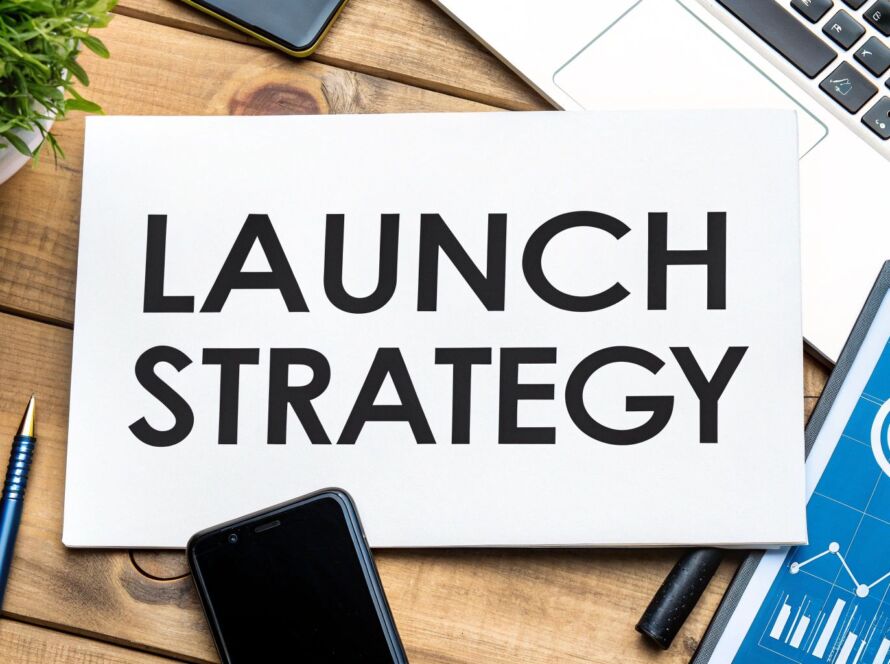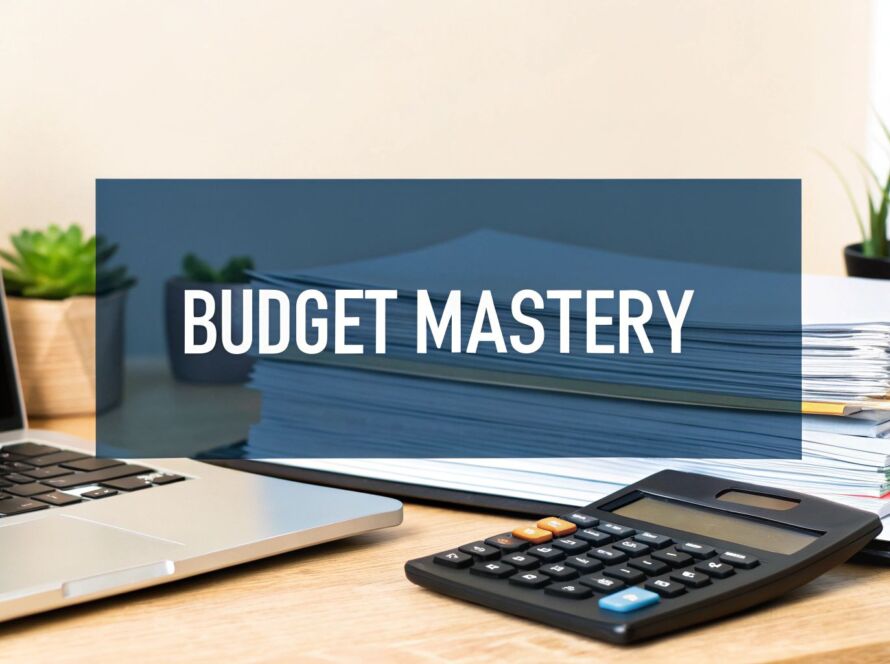Understanding the Evolution of Strategic Business Planning

The old approach to business planning relied heavily on detailed documents that quickly lost relevance as markets changed. Companies found these rigid plans frustrating and inefficient, sparking the need for something more flexible. Enter the Business Model Canvas (BMC) – a simple but powerful tool that helps companies map out their strategy and respond quickly when conditions shift.
The BMC stands out by presenting a company's key elements on a single page, making the entire business model clear and easy to grasp. Rather than wading through endless pages of text, teams can see important components like partnerships, revenue streams, and customer segments at a glance. This visual format makes it much easier to spot opportunities and make smart adjustments.
The rise of these dynamic models reflects major changes in how companies operate and compete. When researchers tracked the term "business model" in academic literature, they found remarkable growth: from just one article mentioning it in 1990 to over 500 by 2000, and then exploding to 15,500 titles and 800,000 mentions by 2010. Learn more about this dramatic shift.pdf).
From Static Plans to Dynamic Canvases: A New Era of Strategy
The BMC represents more than just a trendy planning tool – it signals a fundamental shift in strategic thinking. At its core, the canvas promotes iterative planning, where teams can test ideas and refine their approach based on real results. It also enables cross-functional collaboration by giving everyone a shared view of how the business works and where it's headed.
This collaborative element proves essential for tackling complex business challenges. Teams using the canvas can quickly spot potential issues and opportunities together, leading to better decisions and solutions. The BMC effectively bridges theoretical planning and practical execution, giving organizations a powerful framework for building resilience and sustainable success in fast-changing markets.
Mastering the Nine Building Blocks for Business Success

The Business Model Canvas has become an essential tool for mapping out how a business creates and delivers value. By breaking down operations into nine key building blocks, it provides a clear view of how all the pieces work together. Let's explore each component and see how they combine to drive business success.
Understanding the Customer
The customer-facing side of the canvas starts with identifying your Customer Segments. Are you serving busy professionals, budget-conscious families, or maybe both? For example, a meal delivery service might target working parents who want healthy, convenient dinner options.
Your Value Propositions explain why customers choose you over competitors. This goes beyond features to address real customer needs. A meal delivery service isn't just selling food – it's offering time savings, reduced stress, and better nutrition for families.
Getting your offering to customers happens through Channels like your website, app, or physical locations. The way you build ongoing Customer Relationships – whether through personal service or self-service options – keeps them coming back.
Defining Your Infrastructure
Behind the scenes, your Key Activities are the critical tasks that deliver your value proposition. For our meal service example, this includes menu planning, food prep, and delivery logistics.
Your Key Resources are the assets needed to perform these activities consistently. This could mean kitchen facilities, delivery vehicles, or skilled chefs – whatever's essential to serve customers well.
Strong Key Partnerships provide specialized capabilities you may not have in-house. Food suppliers, delivery services, or technology vendors can help expand what you offer customers.
Managing Finances and Creating Value
The financial foundation includes your Cost Structure – all expenses required to operate the business. Understanding these costs helps ensure sustainable operations.
Revenue Streams show how you make money, whether through one-time purchases, subscriptions, or other models. A meal service might combine monthly meal plans with à la carte ordering.
Recent research with Saudi SMEs showed companies gained the most clarity around partnerships, value propositions, and customer elements when using the canvas. However, they found it harder to define key activities, resources, channels and revenue. Learn more about these findings here. This highlights why taking time to thoughtfully develop each building block pays off. When all nine elements work in harmony, you create a strong foundation for growth.
Using the Business Model Canvas for Digital Change

The Business Model Canvas is a powerful tool that helps established companies adapt to a digital world. Think of it as a map that guides you through the impact of new technologies on every part of your business. With this structured approach, you can clearly see how to update your business model and grow stronger.
Finding New Digital Possibilities
When you use a business model canvas during digital updates, exciting opportunities emerge. The canvas lets you look at each building block of your business and ask "What if?" For instance, a local bookstore might discover how online sales could reach readers nationwide, or how social media could build deeper connections with book lovers.
Building New Skills and Solving Problems
Getting ready for digital changes often means learning new skills. The canvas helps you match what you need against what you already have – whether that's tech tools, employee training, or partner relationships. It also helps spot potential roadblocks early on. By looking at costs and income sources together, you can plan smart ways around challenges before they become problems.
Getting Everyone On Board and Tracking Progress
Success requires everyone working together toward the same goals. The canvas serves as a clear picture that helps every team member understand their role in making positive changes happen. It also gives you specific ways to measure how well things are working. You can track real results, like how much cheaper it becomes to bring in new customers after starting email marketing.
A real-world example shows how well this works. At Zarqa University in Jordan, 269 faculty members across 13 departments used the canvas to plan changes when adding new research software. The results were impressive – their ways of providing value jumped from 4 to 11. Learn more about their success story here. This shows how the canvas helps organizations make successful changes that lead to real growth.
Customizing Canvas Strategies Across Industries

The beauty of the Business Model Canvas lies in its flexibility. While its core building blocks stay the same, businesses across different sectors shape and mold it to meet their unique needs. Let's explore how various industries put their own spin on this powerful planning tool to solve specific challenges and grab new opportunities.
Tech Startups: Focus on Innovation and Scalability
For tech startups, success often hinges on two key areas of the canvas: Value Propositions and Channels. Take a software-as-a-service (SaaS) company, for example. They might zero in on showing how their product saves time and boosts efficiency, reaching customers through digital channels like app stores and social platforms. Strong Key Partnerships with established tech players can open doors to resources and market access. Many tech startups keep their Cost Structure lean, putting their energy into growing their user base quickly.
Manufacturing: Emphasis on Efficiency and Supply Chain
Manufacturing companies tend to spotlight the Key Activities and Key Resources sections of their canvas. Getting production processes just right, building reliable supply chains, and securing raw materials take center stage. Their Cost Structure needs extra attention too – they must carefully balance production costs, workforce expenses, and shipping logistics.
Retail: Customer Experience and Omnichannel Strategies
Retail businesses shine when they nail three parts of the canvas: Customer Segments, Customer Relationships, and Channels. Success comes from really understanding what shoppers want, building lasting connections, and creating smooth shopping experiences both online and in stores. Smart retailers use their canvas to map out personal marketing approaches, rewards programs, and ways to connect all their sales channels.
Tourism: Adapting to Dynamic Market Trends
The tourism industry shows how the canvas helps businesses stay nimble and strong. Their Value Propositions often highlight special experiences, cultural connections, or custom travel plans. This sector has gone through big changes, especially since 2020. Research shows over 70,000 studies looked at tourism business models since 2000, with 11,300 coming after 2020 alone. This surge in research shows how the industry used tools like the Business Model Canvas to rethink their approach and work better with all their partners. Read more about this evolution here.
Looking at these examples shows how the Business Model Canvas bends and flexes to fit any industry's needs. The key is focusing on the parts that matter most for your specific situation and building your strategy from there. This targeted approach helps create business models that last and grow.
Avoiding Critical Canvas Implementation Mistakes
Creating an effective Business Model Canvas requires skill and attention to detail. While the tool itself is simple to understand, the way you use it makes all the difference. Let's explore how to sidestep common mistakes and get the most value from this powerful business planning tool.
Common Pitfalls in Canvas Implementation
One of the biggest challenges teams face is limited stakeholder involvement. The real power of a Business Model Canvas comes from bringing together different viewpoints and expertise. For instance, if you leave out your sales team, you might miss crucial insights about what customers truly value and need.
Many teams also struggle with surface-level research. Relying on gut feelings instead of solid data can lead you down the wrong path. Your canvas needs to reflect real market conditions, customer needs, and competitive dynamics – not just what you think might work.
Teams often forget the importance of testing assumptions. Your canvas should be a living document that evolves as you learn more. When teams skip the validation step, they risk building strategies on shaky ground, wasting precious time and resources.
Best Practices for Successful Implementation
Here's how to create a Business Model Canvas that drives real results:
- Run Interactive Sessions: Get people from different departments together in the same room. Create an environment where everyone feels comfortable sharing ideas and challenging assumptions.
- Ground Everything in Data: Take time to research your market, talk to customers, and analyze competitors. Use these insights to shape each element of your canvas.
- Keep Improving: Review your canvas regularly with your team. Update it based on what you learn from customers, market changes, and business results. A good canvas grows with your business.
- Take Real Action: Turn your canvas insights into specific goals and projects. Set clear metrics to track progress and hold your team accountable.
Troubleshooting Your Canvas Journey
Even experienced teams hit roadblocks. Here's how to handle common challenges:
| Problem | Solution |
|---|---|
| Lack of Stakeholder Buy-in | Show concrete benefits and success stories. Make everyone part of the creation process. |
| Difficulty Defining Value | Start with customer interviews. Focus on solving real problems your customers face. |
| Unrealistic Revenue Streams | Study how others in your market make money. Test different pricing models with actual customers. |
| Overly Complex Canvas | Keep it simple. Focus on the most important elements that drive your business forward. |
By following these guidelines and tackling challenges head-on, your Business Model Canvas can become a powerful tool for growth and strategic planning. Remember – the goal is to create something practical that helps your business succeed, not just fill in boxes on a template.
Building Your Strategic Foundation: A Practical Implementation Guide
Turning your business idea into reality requires more than just vision – it needs a solid strategic plan. The Business Model Canvas (BMC) provides exactly that framework. Let's walk through how to bring your BMC to life in a way that drives real business results.
Preparing for Implementation: Setting the Stage for Success
Starting with strong foundations is key before diving into the BMC building blocks. The right team and environment make all the difference.
-
Build a Well-Rounded Team: Include people from different parts of your business – marketing, sales, product, and finance teams all bring valuable perspectives. When everyone contributes their expertise, you get a fuller picture and greater buy-in.
-
Create an Open Environment: Whether you prefer physical whiteboards or digital tools, make sure your workspace encourages free sharing of ideas. Team members should feel comfortable speaking up and building on each other's thoughts.
-
Get Crystal Clear on Goals: Know exactly what you want to achieve. Are you entering a new market? Launching a product? Refining your current model? Having clear goals keeps everyone focused and aligned.
Populating Your Canvas: A Step-by-Step Approach
Success starts with deeply understanding your customer. Let their needs guide your decisions as you work through each part of the canvas.
-
Know Your Customer: Paint a detailed picture of who you're serving – their demographics, behaviors, challenges and desires. This understanding shapes everything else.
-
Show Your Unique Value: Explain clearly how you make customers' lives better. Focus on benefits, not features. For example, a meal delivery service isn't just food – it gives busy families precious time back.
-
Choose Your Channels: Map out how you'll connect with customers. Consider the right mix of online and offline touchpoints to reach them effectively.
-
Build Strong Relationships: Decide how you'll interact – through personal service, self-service options, or automated support. Match your approach to what your customers prefer.
-
Plan Key Activities: List the essential work needed to deliver on your promises. These core tasks keep your business running.
-
Identify Must-Have Resources: Outline the critical assets – people, property, intellectual property, funding – required to operate successfully.
-
Find Strategic Partners: Look for allies who complement your strengths. The right partnerships expand what you can offer customers.
-
Calculate Your Costs: Know your expense structure inside and out. Profitability depends on managing costs effectively.
-
Set Up Revenue Streams: Be clear on how you'll make money – through product sales, services, subscriptions or other means. Multiple revenue sources can provide stability.
Moving through each element methodically ensures your model is thorough and aligned with your goals.
Ready to bring your business vision to life? MarkBox Studios specializes in MVP development and scalable solutions, providing expert guidance at every step. Contact us to discuss how we can help build your thriving business.



